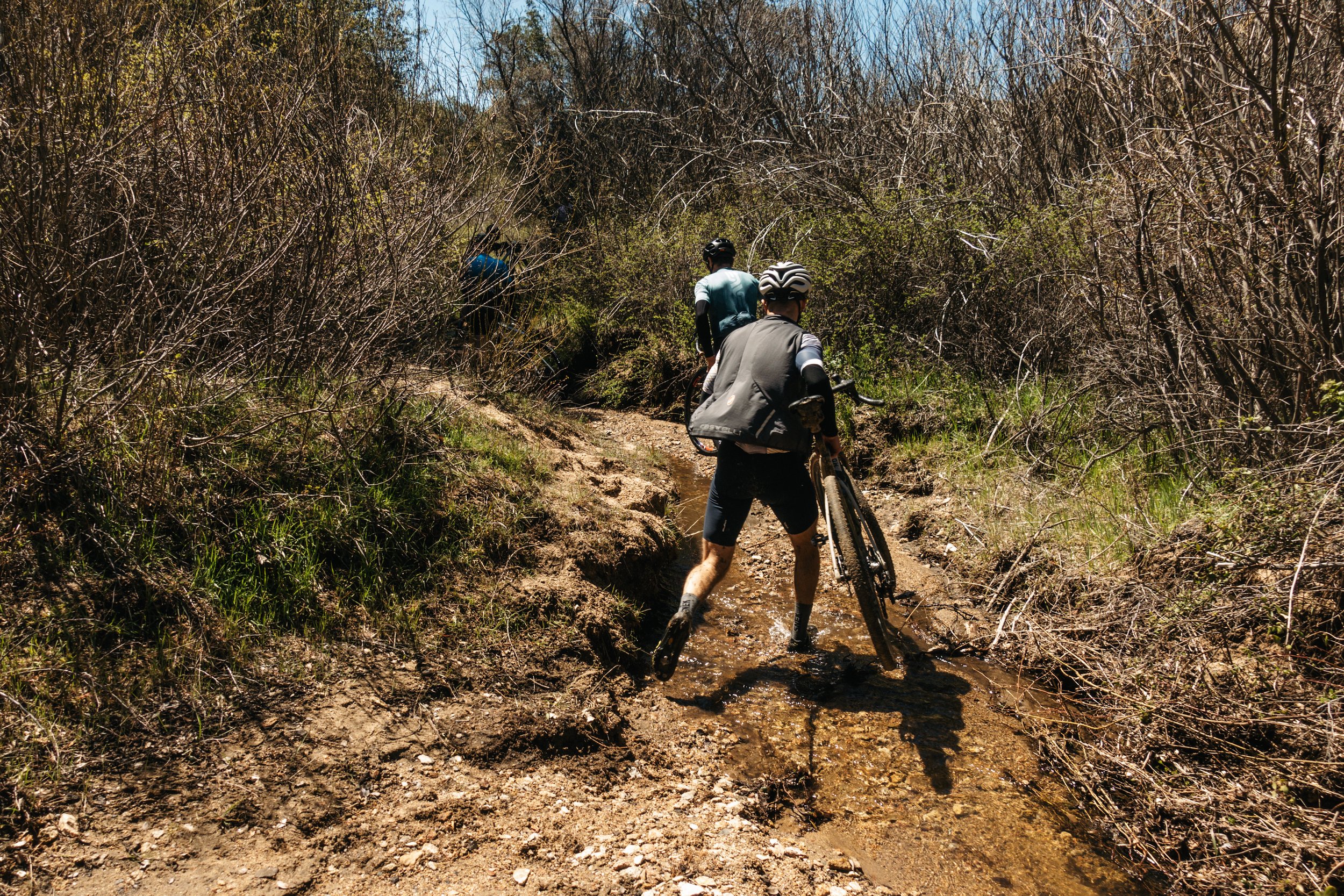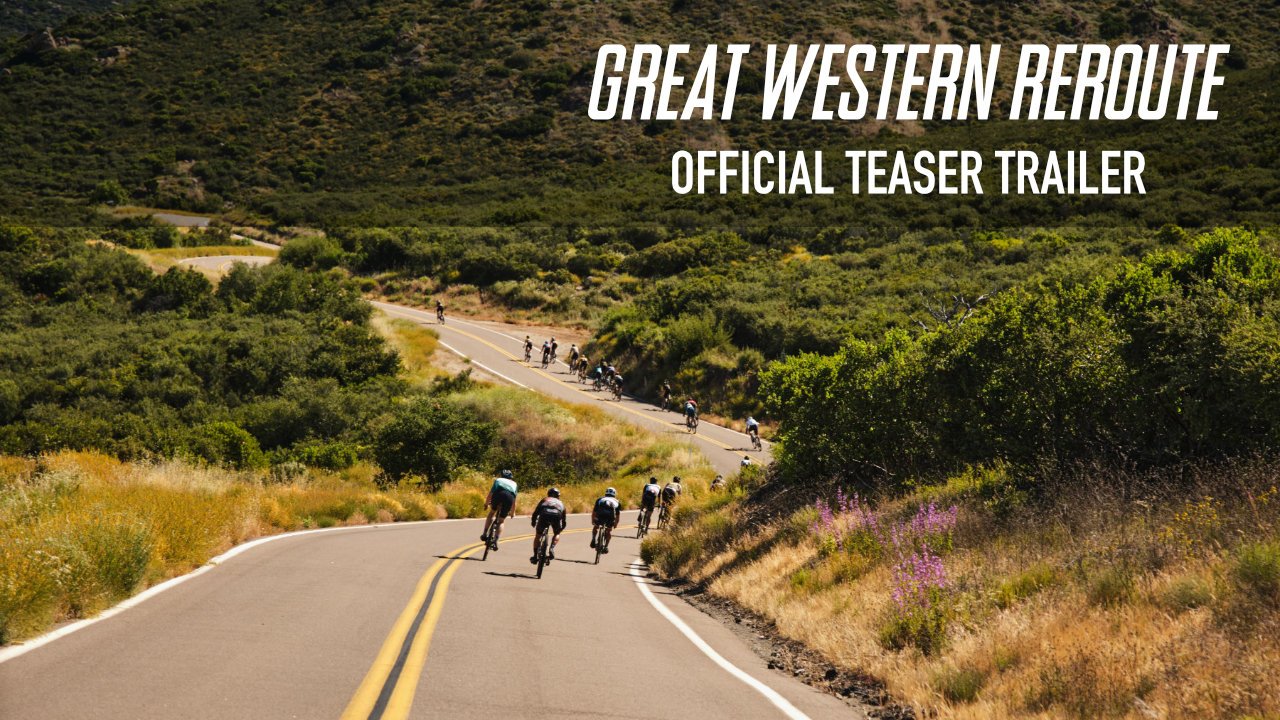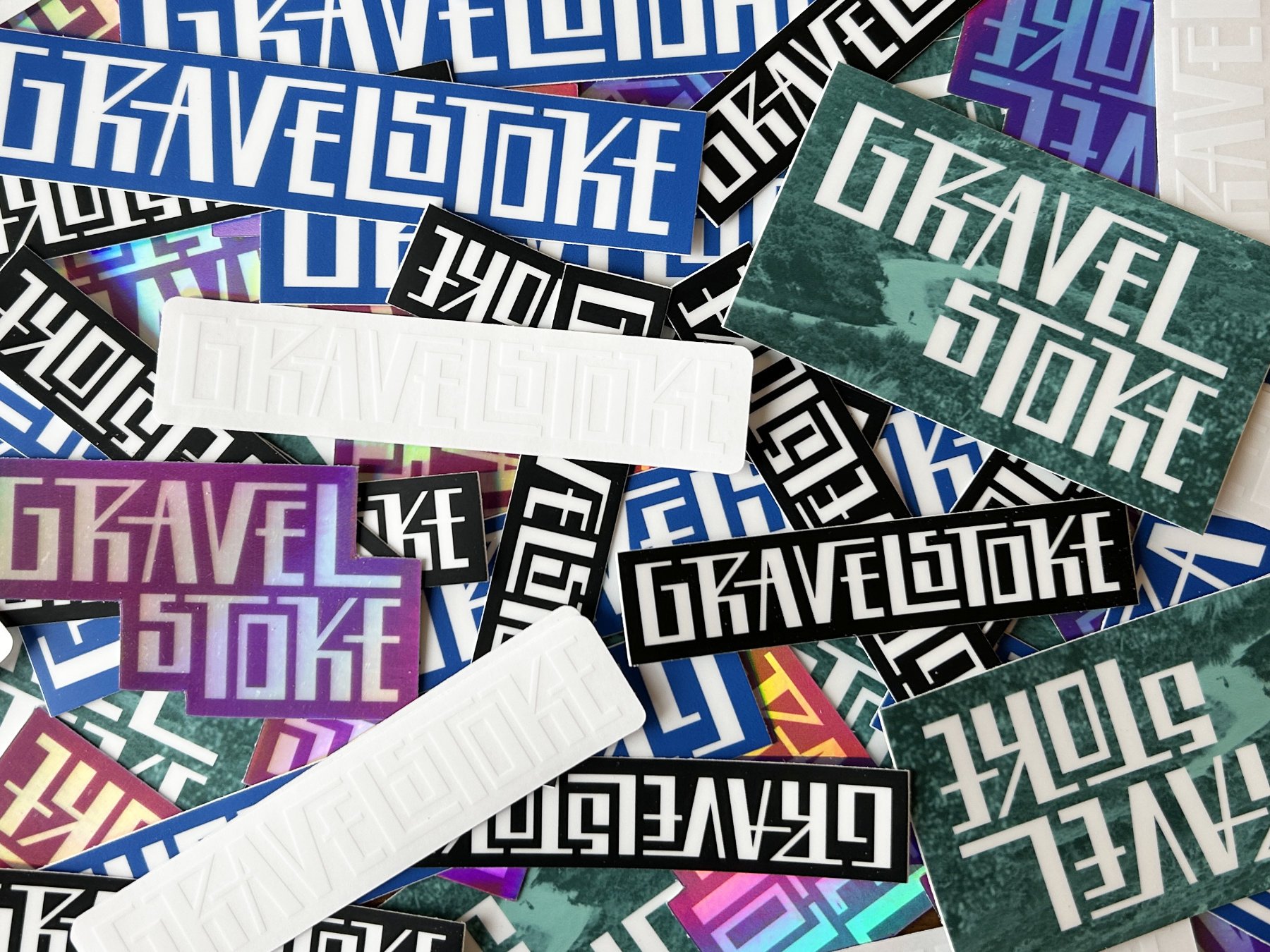The Hunt 1000: Bikepacking The Australian Alps
Words by Will Staler / Photos by James Tynan
2022 was a big year for me. I packed up all my earthly belongings, and my wife and I moved back to her native Australia. I left my precious Midwest (and all my records and music gear) behind me, boxed up my three bikes, and readied myself for the 24-hour journey to my new home. Once we arrived I was especially keen to get out on the saddle and explore — my ultimate joy as a cyclist is exploring new places, and what better way to meet people and get to know the area than to figure out the tastiest gravel routes my new home has to offer?
I was also excited to dip my toes into a few events. In 2021 I decided to enter a few ultra-bike events; the Stagecoach 400, the Tour Divide (you can read that report HERE), and the Dirty Water 300 were all rides I ticked off my list, and so I was keen to give an Australian event a crack. It wasn’t long before I realized that there’s a touchstone event here in Australia, an event that comes up in conversation amongst bikepackers all over the country, and that’s the Hunt 1000. To give you a bit of context, the Hunt 1000 traverses Australia’s Victorian High Country, or the Australian Alps as some refer to it, and usually, the course starts in the capital city of Canberra and ends in Melbourne. The course was created by Dan Hunt, the head honcho behind Hunt bikes, a maker of adventure bike frames. Dan started off as a BMXer and gravitated towards adventure cycling, and created the event as a result of riding the High Country with his mates over the course of years. As he became more and more familiar with the area and realized how suited to off-road, long-distance bikepacking it was, it just made sense to promote the route through an event.
What sets the Hunt 1000 apart from any other event that I’ve been a part of is the fact that it’s organized around a Grand Finish instead of a grand depart. Dan usually suggests a pace of 1000 kms (about 620 miles) in 10 days, which crunches down to about 100 kms (62 miles) a day. If you want to take your time and really take in the sights, give yourself two weeks. If you want to power through it and sleep deprive yourself, go ahead and give it a go in 7 days, or even shorter if punishment and pain is really your bag. When I caught up with Dan at the halfway point of this last year’s HUNT and had the opportunity to ask him why he chose to organize the HUNT this way, his answer was simple: to discourage racing.
I set off on my journey trying to reconnect with the core elements of bikepacking that made me fall in love with traveling on my bike in the first place. First off, since I didn’t have much time to train before rolling out of Melbourne (in 2022 the group started in Melbourne and finished in Canberra) I decided to make a bike trip out of my way down to the start. I rode from my home in Newcastle down coastal tracks to the Central Coast of Newcastle, enjoying the ocean breeze and rolling through some of the most beautiful beaches in New South Wales. I visited my in-laws, had a nice home cooked meal at my mum-in-law’s, then headed up through Wyong on a route my mate James (he’s one of the proprietors of the Overlander Bike Shop in Wyong, and organizes weekly no-drop gravel rides every Sunday) suggested for me. I got to ride a particularly scenic version of the Great North Road, which is a historic road built by the convicts between 1825 and 1836 to connect Sydney to the fertile Hunter Valley. I hopped on a ferry at Wisemen’s Ferry and cruised into Sydney to convene with my mate Izzy. Izzy had concocted a plan—we’d catch a bus to Canberra and ride the very last leg of the Hunt 1000 route. This would give us a chance to test the mettle of our gear and legs on the section of the route in the highest elevation, the section through the Kosciuszko National Park. This part of Australia is known as The Snowies, and is home to Australia’s tallest mountain, Mt. Kosciuszko, which peaks out at 2,228 meters or 7,309 ft. It’s not the Rockies, but it’s up there. Izzy and I happened to ride through the park in some interesting weather for the Australian summer. The wind was brutal and slowed us down, even on the damn descents! We camped out in one of the many alpine huts you can find in the high country, built a fire to stay warm, and woke up to snow on the ground. Having lived in Indiana for the last 17 years, snow is a welcome but not a particularly novel experience, but Izzy was giddy with excitement. Dan makes sure to caution all the riders that snow is a common experience at elevation on the ride, so both Izzy and I had taken precautions to pack winter gear with us, but when Izzy posted a picture of us in the snow to the WhatsApp group chat Dan had set up, many riders made sure to pack some over gloves, overshoes, and thought it prudent to pack the rain pants in with the rain jacket! It was an intense and challenging day getting buffeted about by gusts of winds and feeling the sting of hail and sleet on the descents, but we got out of the elevation and were down to our t-shirts by the end of the day.
Izzy and Will in The Snowy Mountains of Australia in the Summer of 2022.
We got off the Hunt 1000 route, and through a combination of gorgeous, rustic rail trail and public transportation, made our way to Melbourne. We rested, caught up with old friends, checked out some of Melbourne’s amazing restaurants, bars, and coffee shops, and picked up whatever last-minute items we thought we would need for the 10 days to come.
Dan really offers some useful services for the $380 registration fee we paid to enter the 2022 Hunt 1000. Australian weather is infamously extreme, and whether it’s bushfires or floods, there will undoubtedly be some extreme weather event that will render some section of national park or stream crossing impassable. Dan scouts the route in the weeks that precede the rollout to make sure that it’s safe, or passable at all, and modifies the route as needed. As such, the route is slightly different each year, and therefore 1) safe, 2) novel for repeat attendees, and 3) discourages FKT attempts, as the route is slightly different each year. He also sets up the previously mentioned WhatsApp groupchat for anyone keen to talk shop about bike builds and gear choices. There’s a Trackleaders for friends and family to follow, and carrying a GPS tracking device is required as the route is quite remote and dangerous in sections and several riders have needed to press the rescue button in years past.
And what a route it is! Australia is a tough sell as a tourist destination, but it’s a bikepacking paradise, and the Hunt 1000 is really some of the best bikepacking one can do down under. The Victorian High Country is a special place, not only in its natural beauty but also because the country towns you’re riding to are incredibly charming. The only racing you’ll find on the route is to the pub for a pint and a feed. Mountain towns like the old mining town of Walhalla and Dargo are a treat to spend a night in, and since there’s really no need to get a jump on your fellow riders, you’ll find yourself in a pub with about a dozen other maniacs just like yourself enjoying a chicken parmie and a pint of beer swapping stories every night. I find that even the most solitary rider enjoys a nice chat at the end of a day’s ride, and the HUNT is set up to maximize just that experience. Riding the HUNT, I found a group of folks riding at the same 10 day pace that I was on, and by the 3rd day, although we’d spend a large chunk of the day riding solo, or in small groups, we’d almost always end up at the same campsite, cheering each other on, sharing a cup of tea, and gathering in groups to take a look and troubleshoot whatever mechanical issues any of us might be having on that particular day. Undertaking and accomplishing the physical task of the ride itself is a transformative experience—I rock up to the finish line of events like these with confidence and pride in myself, a sense of self—assuredness that seems sadly lacking in the world today. But just as transformative is the power of empathy. It’s goddamn life-changing in dark moments when someone offers you a kind word, a snack from their bag, or takes the time to help you fix a derailleur, a brake cable, or plug a tire. Competition undoubtedly makes us better individuals, but empathy makes us a better species, and the HUNT makes more space for, and focuses on that most precious human interaction than any other event I have personally attended.
“Competition undoubtedly makes us better individuals, but empathy makes us a better species, and the HUNT makes more space for, and focuses on that most precious human interaction than any other event I have personally attended.”
Even with help from your fellow riders, the HUNT is hard. I saw 100 kms a day as a walk in the park after having done the Tour Divide the year before, but I was wrong. I found the course equally challenging, if not more so, than the Divide. I was hike-a-biking often, especially on the infamous Billy Goat Bluff, which is perhaps the most notorious section of the course. In 2022 we descended Billy Goat, but in all the years past riders climbed it, and from what I’ve heard climbing the Bluff was an all-day affair. That’s wild, considering the length of the track isn’t even 5 miles. As I crunch the numbers, it looks like we dropped 3,496 ft (1065 M) in 4.4 miles (7kms) with a maximum gradient of 34.9%. I walked roughly 80% of Billy Goat Bluff, but it was hard to tell because what I rode went by FAST. There were a few riders in the bunch who stayed in the saddle the whole way down, and unfortunately, one of my mate’s ride was cut short when he went over the handlebars and got a concussion on his way down. He got picked up in Dargo and got a ride home, and found out that he had fractured a vertebrae as well.
The attrition rate of the ride speaks to it’s difficulty, especially when you consider that it’s not a race. Most years about 50% of riders cross the finish line. The group of riders I rode with must’ve been a tough bunch, as 80% of us made it to Capital City Brewery in Canberra to enjoy a few post-race pints. The weather that Izzy and I experienced in The Snowies had well passed, and we only had a few days of rain or adverse weather at all, and perhaps that helped our numbers. As I think back, however, we were just a particularly gritty bunch. I was amazed at what some riders persevered through each day to get the job done. One bloke, in particular, Adrian, rather blew my mind. The HUNT was his first bikepacking experience, and on the 2nd day his knees started giving him grief and he had to walk up most of the climbs—of which there are many. He would ride into camp later and later each night, and one night he rocked into camp with a particularly bewildered look on his face. Kangaroos tend to come out at dusk, and as the dusk was turning to dark he’d gotten knocked off the bike by some kangaroos on the move!
I know it’s a long way to travel for a bike ride from just about anywhere in the world, but I can’t imagine a much better time for a bikepacking enthusiast than the HUNT 1000. You’ll get to meet Dan Hunt, the creator of the route, enjoy the company of riders both young and old, and you’ll be able to see the high country of Australia in all it’s glory—the alpine huts, the mobs of kangaroos, the rolling hills slowly growing over the course of the route until you reach peak elevation in The Snowies, and the charm of country towns throughout. Australians are a very hospitable people, and they admire the grit of anyone embarking on an adventure like the HUNT, they’ll be happy to hear your story, and even though they’ll think your mad for doing the whole thing on your bike, they’ll give you a toothy grin and some kind words to send you on your way. The bike paths and cycling infrastructure in the 2 major cities will impress any American who makes the trip—it sends the point home that there are better ways to plan cities and make them more comfortable for cyclists and pedestrians alike. It’s not perfect, and perhaps no match for their counterparts in the Netherlands, but it’s eye-opening for a Yankee like myself. If you feel like making a holiday of it, you could definitely pad out the trip by spending at least a week in Melbourne to take in the parks, restaurants, museums, coffee shops, and thriving art scene that the city has to offer. Canberra is a bit of a mountain bikers paradise, and you could spend at least a few days riding the Centenary Trail, a 140 km loop around the city with plenty of MTB trail offshoots. Keep your eyes peeled for the next edition of the Hunt 1000, save up for some tickets, and make the trip if you’re so inclined, there’s nothing better than raising a glass after a long day’s ride with new mates. Cheers!





























